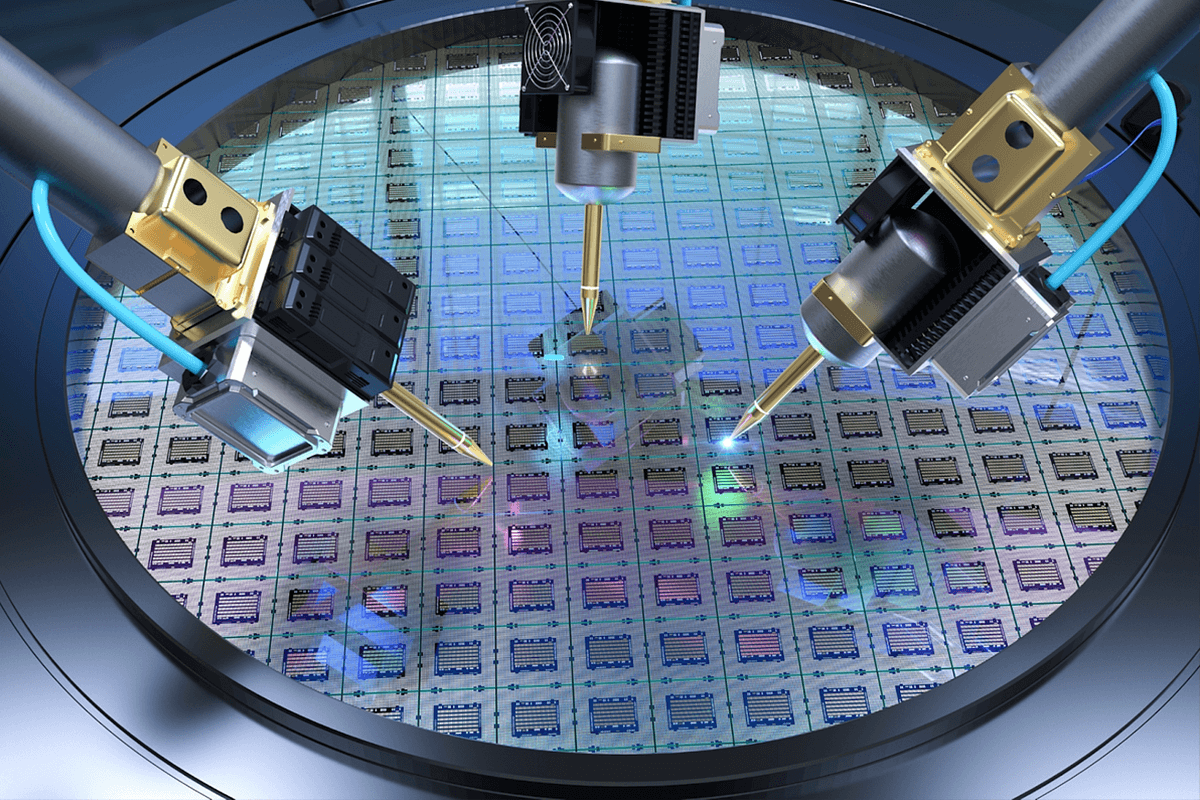India’s semiconductor industry has witnessed remarkable growth and innovation in recent years, fueled by strategic partnerships, technological advancements, and initiatives like the Digital India RISC-V Microprocessor (DIR-V) Programme. Once heavily reliant on imported chips, the nation is witnessing a symphony of domestic production and innovation, orchestrated by various factors. At the heart of this growth lies the disruptive potential of RISC-V, a revolutionary open-source chip architecture poised to drive India’s journey towards self-reliance and global prominence in the semiconductor landscape.
RISC-V: An Open Invitation to Innovation
RISC-V, an acronym for “Reduced Instruction Set Computer – V,” starkly contrasts the traditional, closed-source architectures that have long dominated chip design. These closed systems operate behind a veil of secrecy, limiting customization and collaboration. In contrast, RISC-V thrives on the principle of openness. Its core design principles are freely available, fostering a vibrant innovation ecosystem. This “democratization” of chip design levels the playing field, allowing Indian companies of all sizes to participate in the design and development process. This fosters a more competitive domestic market and allows Indian companies to contribute to the global RISC-V community.
Furthermore, RISC-V boasts a vast array of peripherals, which are the building blocks for connecting various components within a chip. This extensive library, coupled with flexible design environments, empowers Indian engineers to tailor RISC-V chips for various applications. This adaptability makes it ideal for everything from resource-constrained wearables and IoT devices to high-performance computing (HPC) servers churning through massive datasets.
Significance of RISC-V Innovation
RISC-V architecture stands out with its groundbreaking approach to chip design and unmatched customization, scalability, and flexibility. RISC-V emphasizes open-source design principles, which promote cooperation and propel technological breakthroughs, in contrast to proprietary systems. Due to the freedom of innovation provided by this open ecosystem, semiconductor technologies are developing quickly and chip design has become more accessible to the general public.
The accessibility and versatility of RISC-V architecture are among its main features. RISC-V-based systems give developers previously unheard-of freedom and flexibility because of their extensive selection of peripherals and adaptable test and design environments. This accessibility democratizes chip design, enabling startups and independent contractors to compete with established industry players on a level playing field.
Applications of RISC-V in Various Sectors
RISC-V architecture holds enormous potential across numerous industries, including automotive, IoT, mobile, cloud, data center, and embedded systems. Its scalability and customization enable developers to tailor chip designs to specific use cases, fostering innovation and adaptability.
In the automotive industry, RISC-V processors play a key role in fulfilling the demands of enhanced driver assistance, infotainment, connectivity, power, cost, and performance. Similarly, RISC-V cores benefit data centers and HPC applications by handling complex computational workloads with tailored ISAs and providing energy-efficient solutions.
AI chips leverage RISC-V’s flexibility to enable designers to create high-performing, low-power AI accelerators for applications like natural language processing and neural networks. While 5G mobile devices use customized RISC-V cores for optimal performance, wearables, industrial IoT, and home appliances rely on RISC-V processors to meet power needs in battery-operated designs.
Furthermore, RISC-V’s excellent security and reliability make it a preferred choice for meeting demanding specifications in government and aerospace applications. From powering next-generation smartphones to transforming autonomous vehicles, RISC-V is driving revolutionary change in various sectors, demonstrating its adaptability and agility in satisfying a wide range of industrial demands.
India’s Semiconductor Transformation: Building a Self-Reliant Future
India’s ambitious vision of self-reliance in the semiconductor sector is finding its impetus in initiatives like “Make in India.” This program aims to incentivize domestic production and reduce dependence on imported technologies. A key pillar of this vision is the Digital India RISC-V Microprocessor (DIR-V) Programme.
The DIR-V initiative marks a significant achievement in India’s pursuit of self-reliance in chip design, as stated by Mike Bartley, the Senior Vice President of VLSI Design at Tessolve, in his recent article on Data Quest. By promoting indigenous advancement and creativity in RISC-V technology, DIR-V enables Indian enterprises to develop customized chips tailored to specific requirements and applications. This not only diminishes dependence on imports but also reinforces India’s position as a global contender in the semiconductor industry.
The article by Mike Bartley further emphasizes that the DIR-V program’s focus on RISC-V architecture is particularly significant. The open-source nature of RISC-V fosters collaboration within the Indian chip design ecosystem, allowing startups and established players to work together and contribute to the development of customized chip solutions. This collaborative approach is crucial for India’s ambitions in the semiconductor industry.
Market Potential and the Road Ahead for India’s RISC-V Ecosystem
India’s semiconductor industry could undergo a radical transformation with the adoption of RISC-V architecture. As the country advances RISC-V programs and builds up its capabilities, significant growth is anticipated. This revolutionary change reflects India’s breakthrough in chip design and technological progress. By embracing RISC-V, India is firmly establishing itself as a major force in the global semiconductor scene.
Collaboration: The Cornerstone of a Thriving RISC-V Ecosystem
RISC-V innovation is driven forward in large part by strategic alliances and cooperative projects. Governmental organizations, academic institutions, and business leaders can pool their combined knowledge and resources through collaboration. These cooperative efforts and intellectual exchanges spur technical advancement and lead to innovations in chip design. India may become a leader in technological innovation by fully using the potential of RISC-V architecture through the development of an open innovation and collaborative culture inside the semiconductor sector.
Tessolve’s Contribution to RISC-V Innovation
As a trailblazer in the RISC-V space, Tessolve’s TSOC1 project demonstrates the convergence of government endeavors and strategic alliances to establish India as a semiconductor global leader. Tessolve’s partnership with SmartDV and InCore highlights its dedication to efficiency and innovation while utilizing RISC-V’s open-source nature. This project promises to revolutionize semiconductor technology by providing flexible and scalable solutions for a wide range of uses.
The main goal of TSOC1 is to raise the bar for scalability, flexibility, and efficiency in semiconductor projects across the globe. Applications such as automotive, IoT, mobile, cloud, data center, and embedded systems can all be applied to TSOC1, which functions as a sort of canvas. With its many peripherals, including USB, DDR3, Ethernet, and more, TSOC1 offers a quick and affordable way to enter the market. TSOC1’s design and test environment are easily adaptable, and it has been verified using UVM and C-tests.
RISC-V-based TSOC1, with a 500 million USD market size and a predicted 25% CAGR growth, offers countless prospects. By utilizing partnerships to support indigenous capabilities and technological advancements, the initiative represents a step forward in the realization of advanced technological ecosystems. Tessolve’s effort highlights the revolutionary potential of RISC-V architecture and makes a substantial contribution to the creation of cutting-edge solutions.
The semiconductor industry will be significantly impacted by Tessolve’s advancement of the TSOC-1 project, which offers creative and sustainable SoC solutions. This program not only encourages the development of native skills but also provides an effective example of how to use strategic alliances.
The Future of India’s Semiconductor Landscape is RISC-V
India’s semiconductor future can be unlocked through the application of RISC-V innovation. It encourages technical progress, supports homegrown chip development, and ignites creativity in various industries. As India embraces the transformative potential of RISC-V architecture, it will have the chance to become a worldwide leader in this crucial technology domain and become self-reliant in chip design. India can use RISC-V to propel development and create a future where homegrown chip design leads the way in technological progression by cultivating an open and cooperative innovation ecosystem.



